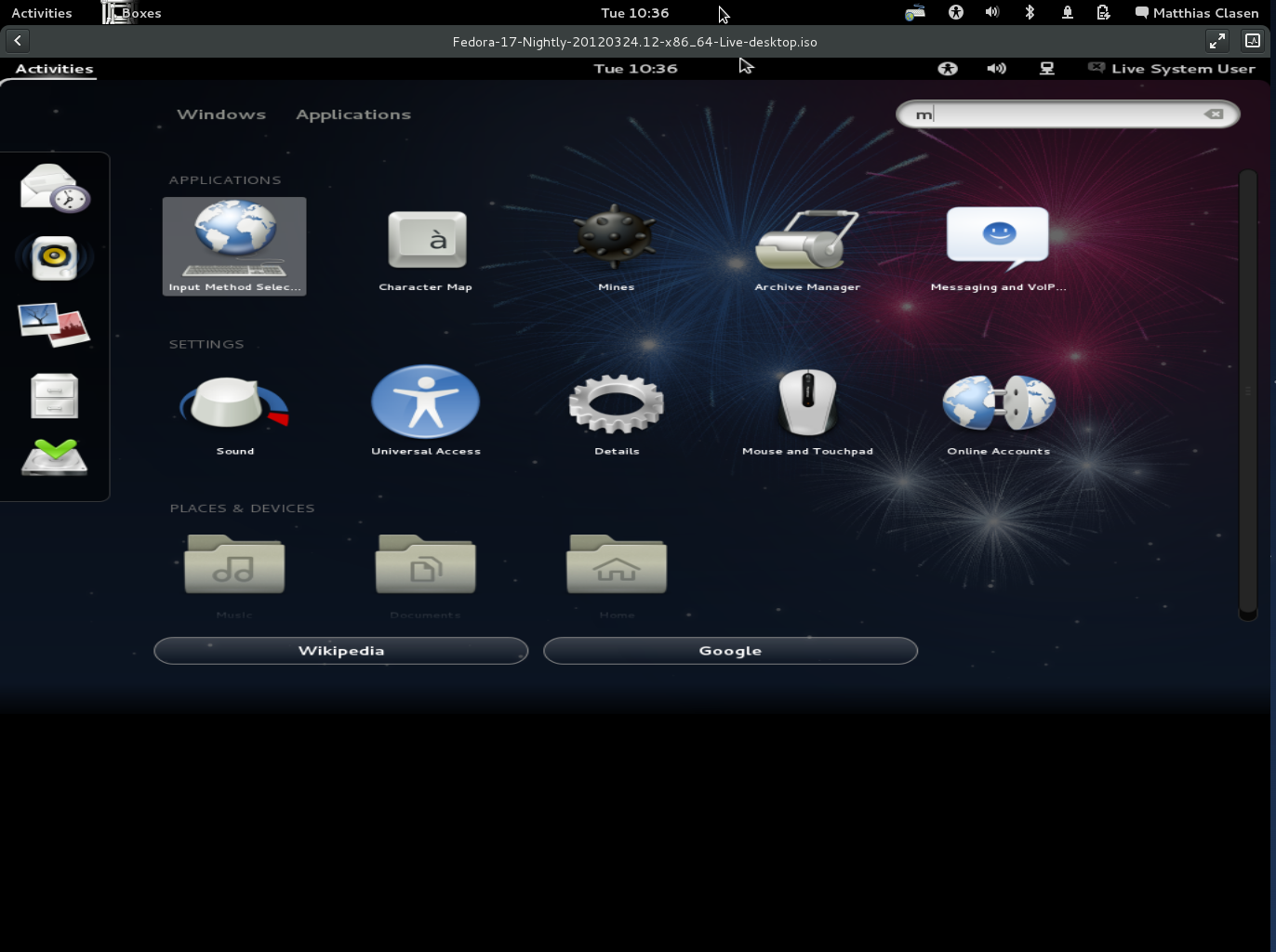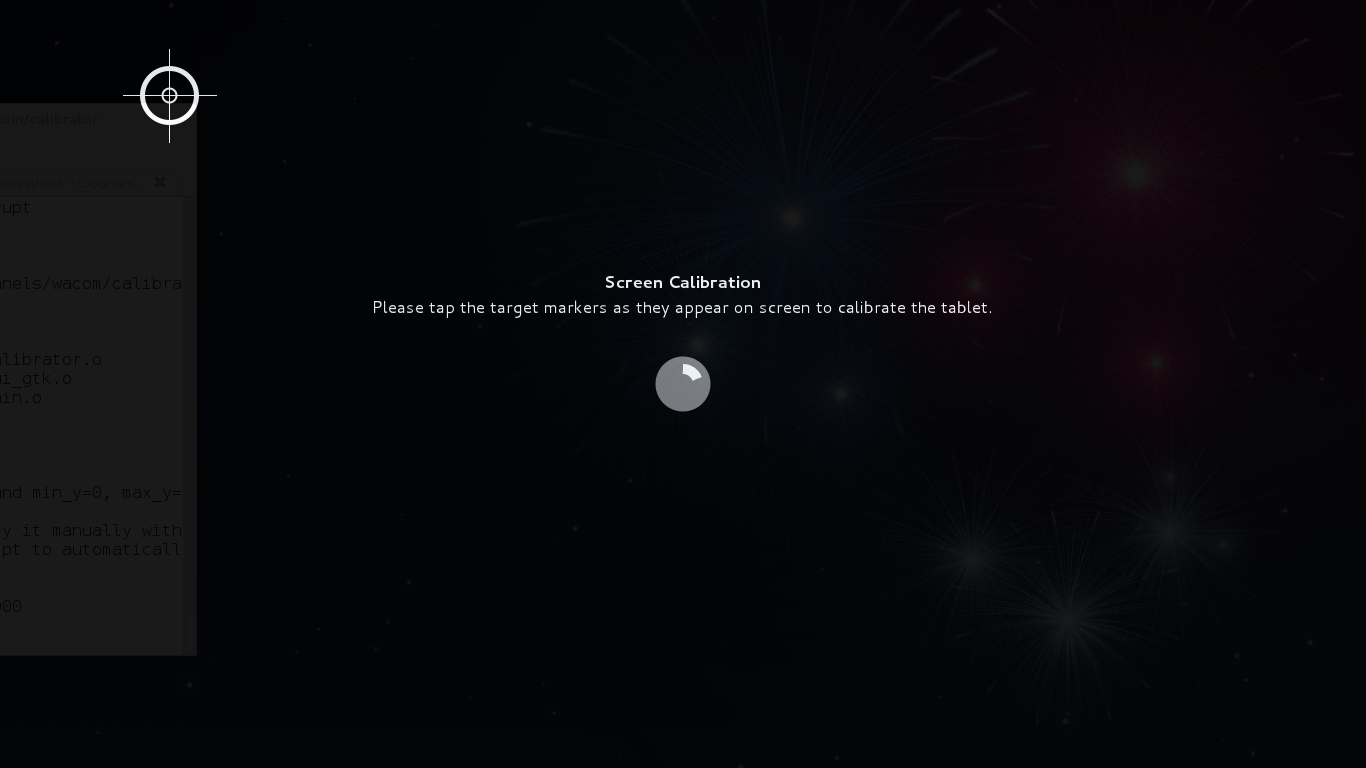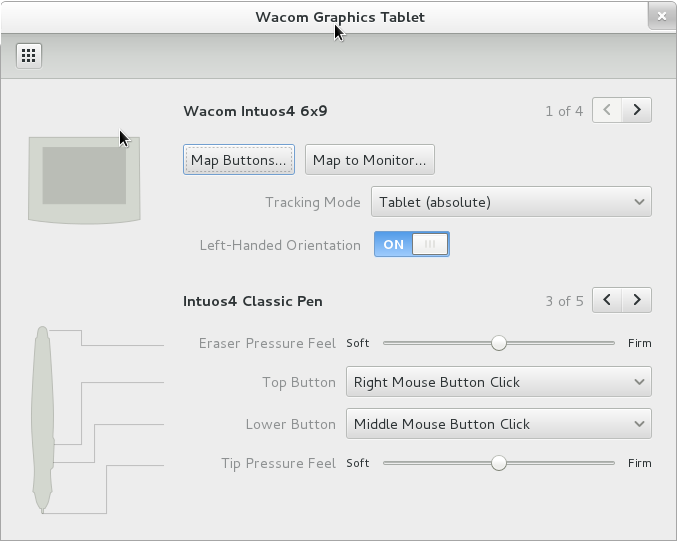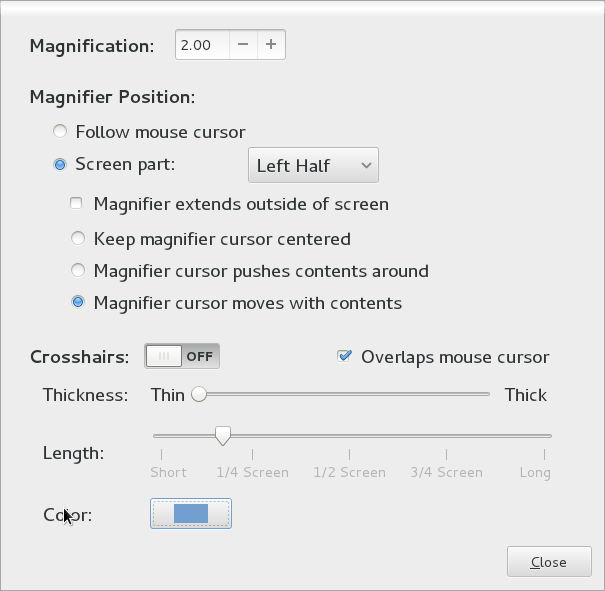While the release is building on my laptop, I have time to write about a few more things I am looking forward to in GNOME 3.4.
Easy Extensions
We has been working hard to make GNOME 3.4 smooth and remove the small things that have been annoying people. But everybody has his own habits, and sometimes you just need that extension to support your specific workflow. This will be much easier from now on; with extensions.gnome.org, extensions are just one click away, and you can try them out right from your browser.
GNOME goes virtual
Two exciting things in one screenshot: gnome-boxes is beginning to make VM access easy in GNOME, and gnome-shell is running fine in qemu with software rendering.
Admittedly, the gnome-boxes release in 3.4 is more of a preview of things to come, but it is already working well enough for simple tasks, such as testing nightly spins. And for software rendering to work, you need recent drivers – the current F17 beta works nicely, as seen in the screenshot.
Update: Yes, the aspect ratio of the VM is slightly off; I hear that this will be fixed in F17 final.





